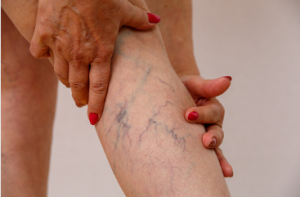Varicose vein treatment Adelaide can offer various options for patients suffering from this ailment. These options include Endovenous laser therapy, Sclerotherapy, Tumescent anaesthesia, and Ambulatory phlebectomy. Choosing a treatment method that is suitable for you can help you choose the best option for your condition.
 Sclerotherapy
Sclerotherapy
Sclerotherapy is a non-invasive procedure that is used to treat varicose veins. It is a relatively safe procedure. Most patients experience minimal downtime and no long-term side effects. The treatment is usually repeated every two to four years. It can be effective on minor and moderate varicose veins but not on larger veins. For more information about varicose vein treatment Adelaide, click here to find out more now.
The procedure takes about half an hour, depending on the number of areas to be treated. No anesthesia or sedation is required. Some patients experience temporary cramping during the procedure, but this usually subsides within a few minutes. After the procedure, the injection sites are covered with tape or gauze. Patients may need compression stockings for about a month following the procedure.
Sclerotherapy is a minimally invasive procedure involving injections of a sclerosant to treat varicose veins. This procedure is safe and effective and does not require a hospital stay.
Endovenous laser therapy
Endovenous laser therapy for varicoses involves using laser energy to close a faulty vein. This minimally invasive procedure is performed through a small incision using ultrasound guidance. The treatment is relatively safe and has a high success rate. However, patients typically require a combination of sedation and local anaesthetic.
The procedure is similar to traditional sclerotherapy, which involves puncturing a vein near the ankle or knee and inserting a fine laser probe to close it off. In some cases, endovenous laser therapy is used with ultrasound-guided sclerotherapy. The procedure can cost between $2500 and $4000 per treatment. Another option for treatment is radiofrequency ablation, which involves inserting a catheter into the vein, heating the blood, and destroying the vein with heat.
Sclerotherapy is an effective treatment for spider veins and smaller varicose veins. The treatment works by injecting a chemical into the affected vein to cause it to close and then be absorbed by the body. Although the procedure is generally painless, it can have some side effects, including stinging and itching. The treatment will require several follow-up sessions to ensure success. For more information about varicose vein treatment Adelaide, click here to find out more now.
Ambulatory phlebectomy
While ambulatory phlebectomy is the most common treatment for varicose veins, it is not the only treatment available. There are many other treatments available, such as sclerotherapy and compression stockings. While they are safe, they do not solve the underlying problem of varicose veins. To find out which treatment best suits your needs, you should discuss your condition with your doctor.
Sclerotherapy is a procedure that has been used in Australia for over twenty years. It uses ultrasound technology to scan the legs for faulty veins. Once the veins have been identified, the doctor will inject a sclerosant into them. This chemical destroys the lining of the vein and causes it to shrink. It is a safe procedure that can be repeated every two to five years. However, it is not covered by Medicare, and you should consult your doctor before the procedure.
Ambulatory phlebectomy is a less invasive procedure for the removal of varicose veins. The procedure is performed under local anesthesia and may involve one or two sessions. During the procedure, the surgeon will make several small incisions in the skin. Usually, these incisions will be barely noticeable within six to twelve months. After the procedure, you will have to wear a bandage for 24 hours and will be required to wear compression stockings for a couple of weeks.
Before you start treatment, you should have an accurate diagnosis and understand the condition of your varicose veins. Then, the doctor may be able to recommend a treatment based on your symptoms. If your condition is not too severe, you can undergo topical treatments, acupuncture, massage, and surgery. These procedures are often less intrusive and don’t require an overnight stay or prolonged recovery time. However, before you go under the knife, it’s best to consult a physician, as some procedures are unsuitable for everyone.